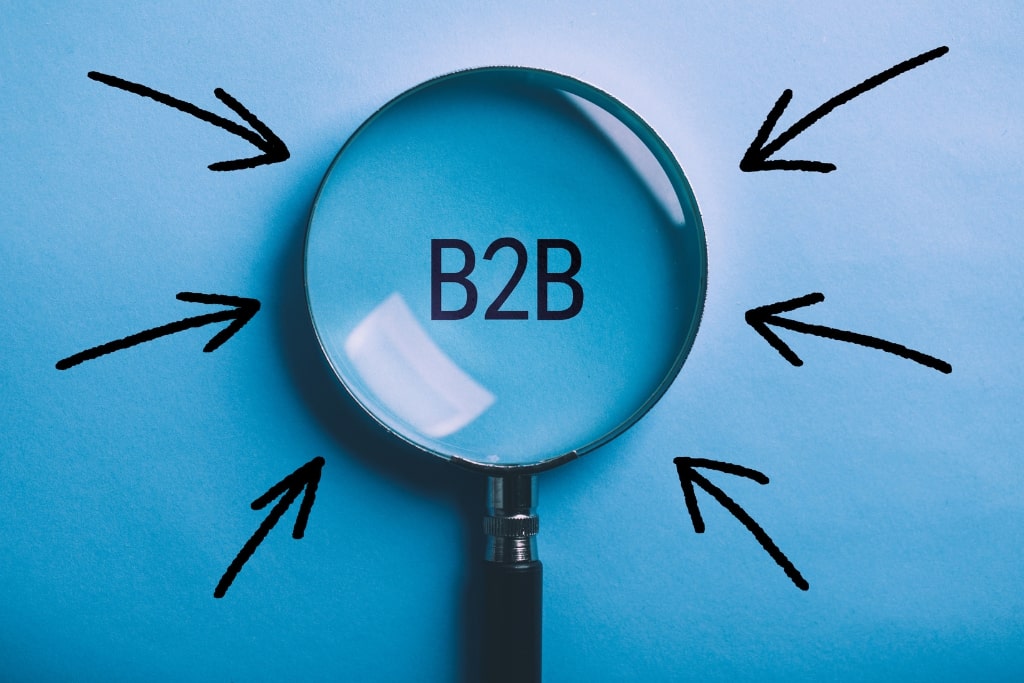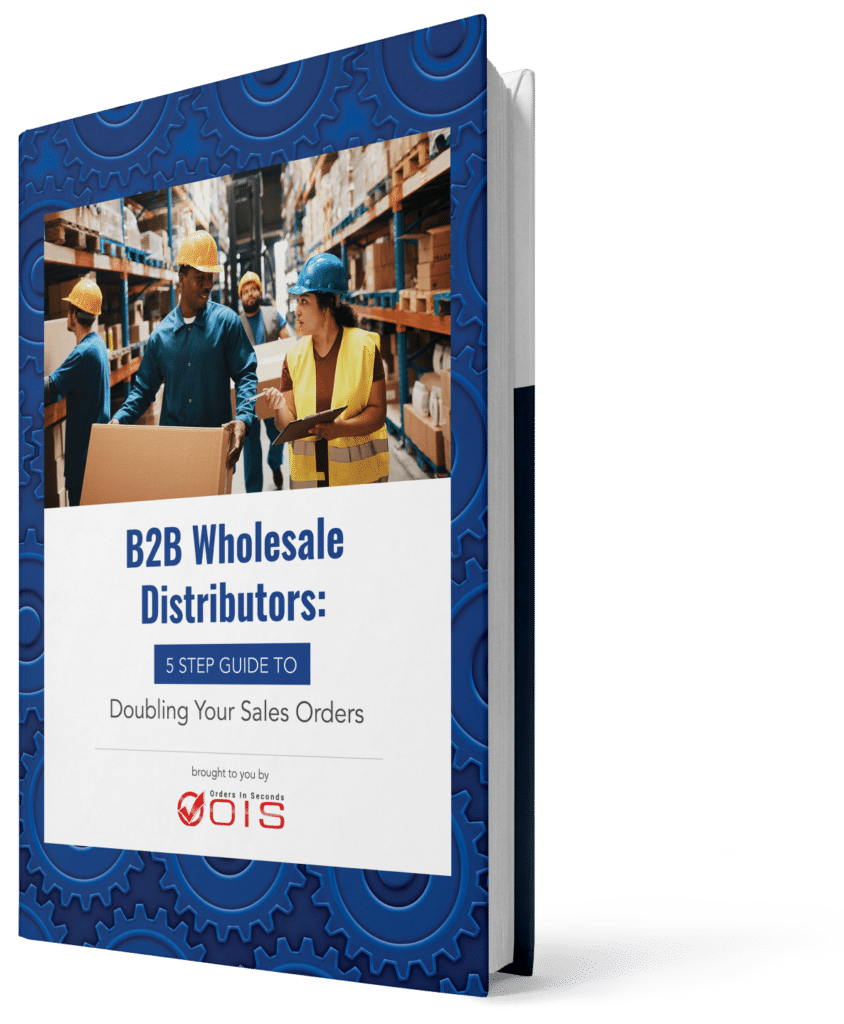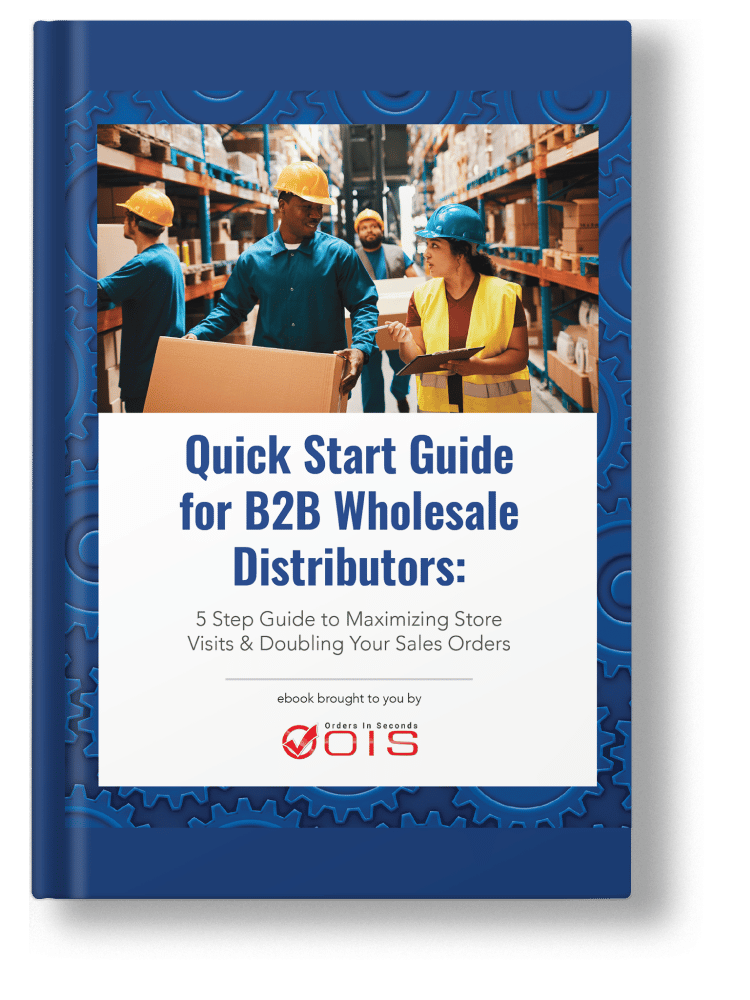Key Takeaways
B2B distribution is the process of moving products from manufacturers to business buyers, like retailers and wholesalers. It keeps the supply chain running smoothly by ensuring timely deliveries. This article covers the latest trends and practices in B2B distribution for 2024, helping you optimize your strategy and stay competitive.
- Effective B2B distribution relies on robust logistics, fulfillment processes, customer relationship management, and advanced inventory management to ensure timely and accurate deliveries to business customers.
- Competing with large e-commerce platforms requires smaller B2B distributors to focus on niche markets, implement digital sales channels, offer personalized services, and leverage technology for operational efficiency.
- Technological integration, including automation, data analytics, and e-commerce platforms, significantly enhances B2B distribution by improving order management, operational flexibility, and customer reach, ultimately driving business growth.
Table of Contents
- Introduction
- Understanding B2B Distribution
- Key Components of a Successful B2B Distribution Strategy
- Differentiating Between B2B and B2C Distribution
- Advantages of B2B Distribution Channels
- Challenges in B2B Distribution and How to Overcome Them
- Leveraging Technology for B2B Distribution Success
- Best Practices for Building a Robust B2B Distribution Network
- Case Studies: Successful B2B Distribution Models
- Choosing the Right B2B Distribution Partner
- Summary
- Frequently Asked Questions
- Master B2B Distribution with Ease
Introduction
B2B distribution is the process of distributing products and services from manufacturers or providers to businesses such as retailers, wholesale distributors, or other manufacturers. This intricate process typically begins when a distributor purchases products in bulk from a manufacturer or supplier. The distributor then manages the packing and shipping of these orders to various business customers, who in turn, decide how to utilize the products.
Efficient B2B wholesale transactions hinge on well-structured strategies that cater to the specific needs of business buyers. A clear grasp of how goods flow from manufacturers to end businesses allows companies to hone their operations for timely deliveries and customer satisfaction. The focus of this article is to provide insights into wholesale business strategies that can streamline B2B wholesale transactions and enhance overall efficiency.
Whether you are a retailer, wholesaler, or manufacturer, the ability to navigate the complexities of B2B distribution is crucial. From logistics and fulfillment processes to customer relationship management and inventory techniques, each aspect plays a vital role in the success of your distribution strategy. Let’s embark on this journey to explore the top trends and best practices shaping B2B distribution in 2025.
Understanding B2B Distribution
B2B distribution serves as a cornerstone in the supply chain, connecting manufacturers with business customers such as retailers, wholesalers, and other manufacturers. It involves procuring goods in large quantities from manufacturers and efficiently managing their delivery to various business entities. This process not only supports the seamless flow of commerce but also ensures that market demands are met promptly.
The intricacies of B2B distribution can be best understood by breaking down its key components and terminologies. A deep dive into these aspects helps businesses develop a clearer picture of the distribution strategy required to meet their unique needs. In the following subsections, we will define essential terms related to B2B distribution and discuss its critical role in the supply chain.
Definition and Key Terms
Understanding B2B distribution starts with grasping the fundamental terms and definitions that underpin this business model. B2B stands for ‘business-to-business,’ where businesses sell products and services to other companies instead of consumers. B2B suppliers, therefore, are companies that provide goods or services in bulk to other businesses. This contrasts with B2C (business-to-consumer) models, where products are sold directly to individual consumers.
Key takeaways from understanding these terms include the differentiation between manufacturers, distributors, and wholesalers. Manufacturers produce the goods, distributors handle the logistics of moving these goods, and wholesalers sell them in bulk to other businesses. Recognizing these roles is crucial for selecting the right partners and ensuring an efficient supply chain.
If mistakes are holding back your wholesale distribution business, download our free eBook “Avoid the Top 5 Mistakes Wholesale Distributors Make” and discover key strategies to optimize your operations for success!
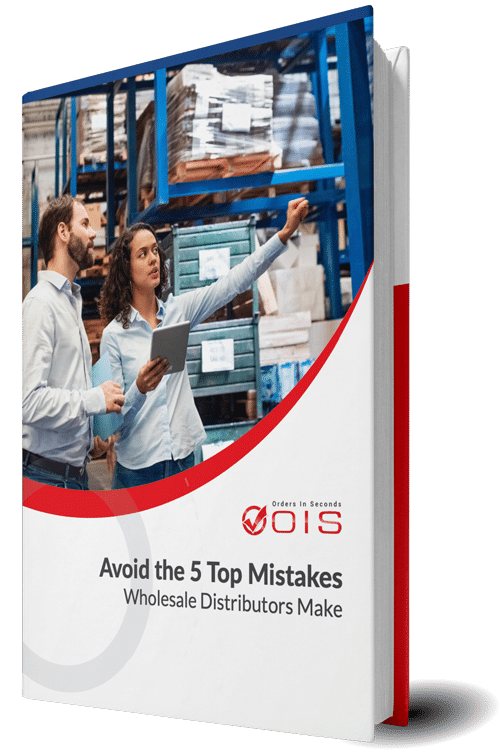
Avoid the Top 5 Mistakes Wholesale Distributors Make
Importance in the Supply Chain
B2B distribution plays a critical role in the supply chain by facilitating the efficient movement of products from manufacturers to other businesses. This process is essential for:
- ensuring timely deliveries
- maintaining the flow of commerce across various sectors
- meeting market demands
- boosting customer satisfaction
Effective supply chain management in B2B wholesale ensures that products are available when needed.
The importance of B2B distribution includes:
- Handling diverse inventories
- Managing large-scale transactions between businesses and manufacturers
- Acting as intermediaries to streamline operations
- Allowing manufacturers to focus on product development
- Ensuring that business buyers receive their orders efficiently and on time.
Key Components of a Successful B2B Distribution Strategy
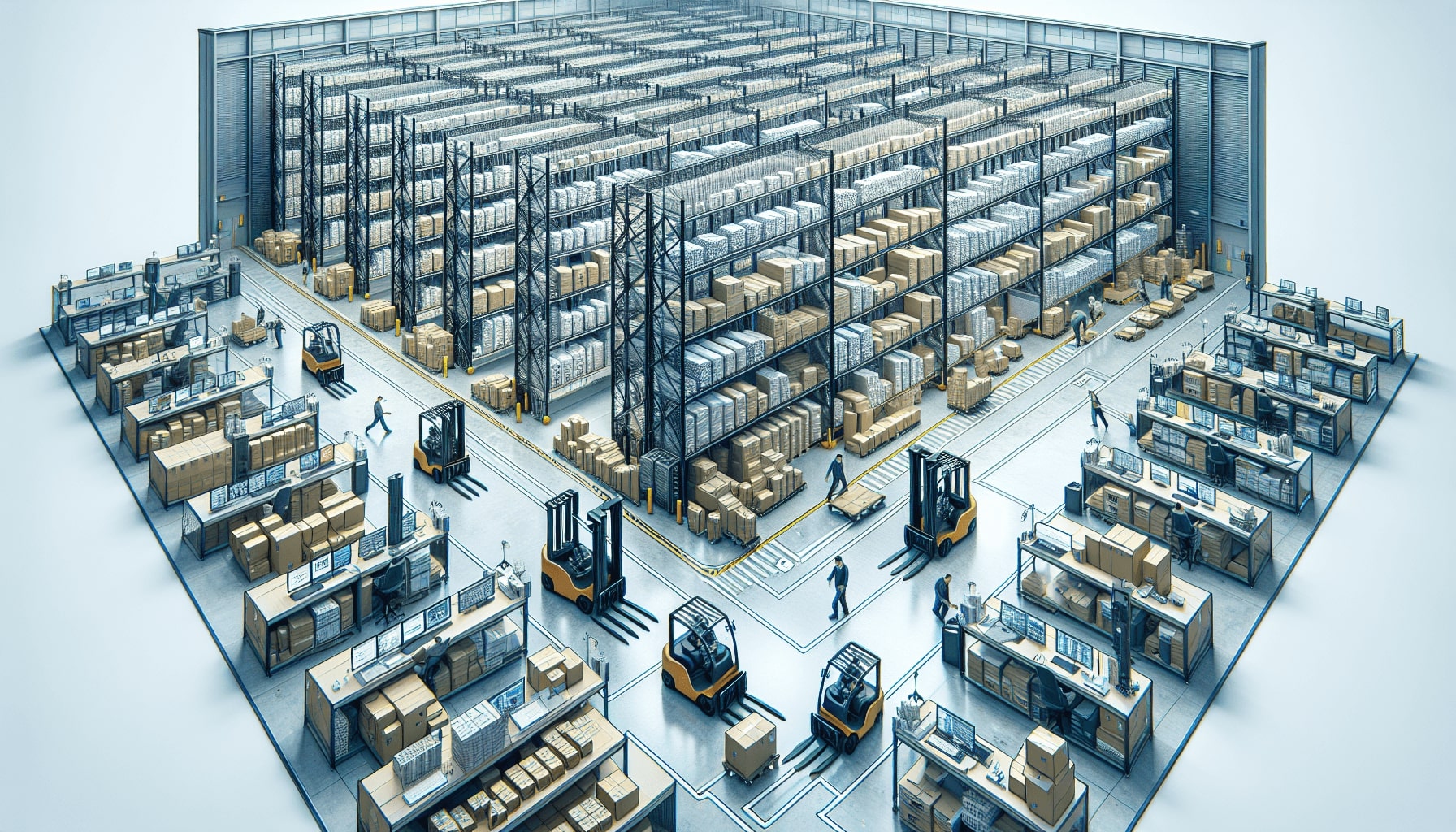
For any business aiming to sell products to other companies, forging a robust B2B distribution strategy is vital. A strategic approach involves:
- Equipping your distribution operations with the right infrastructure
- Hiring experienced logistics providers
- Implementing effective customer relationship management systems
These components, including raw materials, are critical for meeting the specific needs of B2B wholesale operations and ensuring a successful venture.
In the following subsections, we will explore the key elements of a successful B2B distribution strategy, including logistics and fulfillment processes, customer relationship management, and inventory management techniques. Each of these components plays a significant role in optimizing the distribution model and aligning it with business goals.
Logistics and Fulfillment Process
Efficient logistics and fulfillment processes are the backbone of successful B2B distribution. These processes ensure that products are delivered to customers on time and in excellent condition, thereby enhancing customer satisfaction. Order fulfillment in B2B involves several steps, including picking, packing, and shipping orders to ensure accurate and timely deliveries.
Partnering with logistics providers who offer customized solutions can significantly streamline the fulfillment process. These providers help consolidate shipments, find optimal routes, and secure bulk shipping discounts, ultimately reducing shipping costs and improving delivery times. Additionally, leveraging technology solutions for inventory management and order processing can further enhance the efficiency of logistics operations.
Customer Relationship Management
In B2B distribution, it’s vital to build and sustain strong relationships with business customers. Effective customer relationship management (CRM) focuses on understanding and meeting the specific needs of business buyers, thereby fostering long-term loyalty and repeat business. Maintaining a good rapport and trust simplifies many of the challenges associated with B2B sales.
CRM strategies include segmenting customer data, creating personalized marketing content, and using automation tools to streamline communications. By tailoring marketing strategies to address the unique pain points of different customer segments, businesses can enhance engagement and drive higher conversions. Personalized attention and expert guidance are at the core of successful customer relationships.
Inventory Management Techniques
To avoid stockouts and ensure product availability for meeting customer demands, effective inventory management is indispensable. B2B transactions often involve large bulk orders that require sophisticated management systems for tracking inventory and logistics. Implementing these systems can help businesses manage their stock levels more efficiently and reduce the risk of overstocking or understocking.
Choosing the right distribution partner with sufficient warehousing space and advanced technology solutions for inventory management is crucial. Automation in order processing and inventory tracking can significantly increase efficiency, reduce costs, and improve overall supply chain management.
Differentiating Between B2B and B2C Distribution
Grasping the differences between B2B and B2C distribution models is key to tailoring strategies that meet specific business needs. B2B distribution involves transactions between businesses, where products are purchased in bulk and used for further production or resale. In contrast, B2C distribution targets individual consumers purchasing products for personal use.
B2B transactions typically involve longer sales processes, including quotes, approvals, and negotiations, often managed by account representatives. These transactions require building personal relationships and constant follow-up to ensure customer satisfaction. On the other hand, B2C transactions are more immediate and straightforward, with set pricing and streamlined payment processes.
The differences also extend to order sizes, delivery times, and payment methods. B2B orders are generally made in bulk, leading to longer delivery times and higher shipping costs. Payments in B2B transactions may occur over an extended period using traditional methods like credit or purchase orders, whereas B2C payments are typically immediate.
B2B distribution channels offer several advantages that can help businesses achieve their goals more effectively. One of the primary benefits is the ability to manage bulk orders, which simplifies logistics for smaller businesses and ensures timely deliveries. Established networks and processes within B2B distribution channels also help prevent shipping delays and optimize the supply chain.
Another significant advantage is the cost savings associated with volume discounts. B2B wholesale transactions often involve larger average order values and higher sales volumes, which can lead to substantial cost savings for both manufacturers and distributors. This allows manufacturers to focus on product development while outsourcing distribution to experienced partners.

B2B distribution is not without its challenges, but understanding these obstacles and devising strategies to overcome them can lead to successful operations. One of the main challenges is competing with global e-commerce players like Amazon and Alibaba, which have extensive resources and an expansive digital presence. Smaller B2B distributors must find ways to stand out and attract their target market despite these formidable competitors.
Additionally, traditional B2B distributors face the challenge of:
- Adapting to digital platforms and technologies as more sales move online
- Managing complex shipping requirements
- Ensuring compliance with various regulations
In the following subsections, we will explore these challenges in detail and offer practical solutions for overcoming them.
Competing with Large Marketplaces
Competing with large global e-commerce players requires strategic marketing and a clear value proposition. These players have achieved significant brand awareness and possess extensive resources, making it challenging for smaller B2B distributors to gain visibility. However, smaller distributors can still succeed by:
- Focusing on niche markets
- Offering personalized services
- Providing exceptional customer support
- Building strong relationships with customers
- Leveraging technology to streamline operations
By implementing these strategies, smaller distributors can carve out a space in the market and compete effectively with larger players.
To succeed, B2B distributors can:
- Leverage digital platforms to reach their target market more effectively
- Implement robust marketing strategies
- Highlight unique product offerings to attract customers seeking specialized services that large marketplaces may not provide
- Provide excellent customer service
- Build strong relationships
These strategies are key to competing with larger competitors.
Adapting to Digital Platforms
As B2B sales increasingly transition online, adapting to digital platforms becomes imperative. Traditional B2B distributors who rely on telephone or email for sales must transition to digital channels to stay competitive and sell directly. By 2026, over 80% of B2B sales are expected to transpire through digital channels, making this shift crucial for future success.
Optimizing websites and email campaigns for mobile devices is a significant step in this digital transformation. Embracing new technologies and digital marketing strategies can enhance customer engagement and streamline sales processes, ultimately boosting revenue and market reach.
Managing Complex Shipping Requirements
Managing complex shipping requirements is a critical aspect of B2B distribution. B2B fulfillment often involves compliance with specific requirements such as tax rules, product restrictions, and parcel labels. B2B distributors also need to cater to specific shipping requirements for each buyer, as these needs can differ greatly between clients. This flexibility is essential for providing a customized service that meets individual demands.
Partnering with logistics providers that have expertise in B2B can help manage these complexities. Some ways they can help include:
- EDI compliance, which enables distributors to exchange documents and carry out transactions with retailers electronically, streamlining the process and ensuring accuracy.
- Securing bulk shipping discounts to reduce costs.
- Optimizing fulfillment processes to improve efficiency and meet customer expectations for timely deliveries.
Leveraging Technology for B2B Distribution Success
Technology has emerged as a game-changer in B2B distribution, amplifying efficiency and enriching the customer experience. Automation addresses workforce scarcity and space limitations, providing flexibility and improving operational efficiency. For example, solutions like AutoStore offer the highest storage density in the market, maximizing available space and integrating seamlessly with other advanced technologies such as picking robots and Autonomous Mobile Robots (AMRs).
ShipBob’s comprehensive solution exemplifies how technology can revolutionize B2B distribution by:
- Fulfilling orders on behalf of companies
- Saving time
- Reducing costs
- Increasing efficiency
By managing direct-to-consumer (DTC) and B2B fulfillment through a single platform, ShipBob navigates unique retailer requirements with ease, showcasing the transformative power of technology in the industry.
E-commerce Integration
Integrating e-commerce platforms into B2B distribution operations offers numerous benefits, including improved order management and customer reach. B2B buyers increasingly prefer to research, connect, and purchase through online channels. Real-world examples, such as Intelligentsia Coffee’s 40% increase in transactions after unifying their B2B and B2C product catalogs, highlight the potential of ecommerce order management integration.
Companies like Rainbow Treecare and HP have expanded their international presence and increased revenue by implementing online store ordering and launching new e-commerce stores, respectively. These success stories demonstrate how e-commerce platforms can enhance the efficiency of managing large and complex orders, ultimately driving business growth.
Data Analytics and Automation
Data analytics and automation play pivotal roles in streamlining B2B distribution processes. Advanced tracking systems allow real-time monitoring of shipments, improving accuracy and efficiency. Automated systems can manage various order sizes and product groupings from a single distribution center, enhancing operational flexibility.
ShipBob’s integration with SPS Commerce for EDI compliance exemplifies the benefits of automation, facilitating improved accuracy and data exchange while automating B2B fulfillment processes. By leveraging data analytics, businesses gain valuable insights into customer behavior, enabling them to make informed decisions and optimize their operations.
Best Practices for Building a Robust B2B Distribution Network
To construct a robust B2B distribution network, a strategic approach that elevates the customer buying experience is required. Key practices include making the website user-friendly, automating customer communications and updates, and maintaining a robust customer service program. These practices ensure that customers have a seamless and satisfying experience, fostering loyalty and repeat business.
Additionally, leveraging technology and data analytics can optimize distribution operations, ensuring timely deliveries and efficient inventory management. By focusing on these best practices, businesses can build a strong distribution network that meets the evolving needs of the market and supports long-term growth.
Case Studies: Successful B2B Distribution Models
Real-world case studies offer valuable insights into effective B2B distribution strategies and their impact. For instance, Nathan Garrison, Co-Founder and CEO of Sharkbanz, highlighted the success of their B2B partnership, emphasizing its benefits. These success stories demonstrate how implementing effective B2B strategies can significantly enhance business operations and customer satisfaction.
By examining these case studies, businesses can learn from the experiences of others and apply similar strategies to their own operations. This knowledge can help companies navigate the complexities of B2B distribution and achieve their business goals more effectively.
Choosing the Right B2B Distribution Partner
Selecting a suitable B2B distribution partner is pivotal for addressing specific business needs and achieving objectives. Key factors to consider include:
- Price
- Quality assurance
- Communication standards
- The partner’s location
Ensuring that the distribution partner can scale alongside your business and has a strong fulfillment network is also essential for reducing shipping costs and times.
Maintaining multiple suppliers provides leverage during negotiations and allows businesses to compare quotes and terms, ensuring they get the best possible deal. A good distribution partner helps merchants distribute products efficiently, maintaining high order accuracy rates and consistent on-time delivery. Nurturing and maintaining these relationships aligns business objectives and fulfillment processes, ensuring long-term success.
Summary
In conclusion, a successful B2B distribution strategy involves understanding the complexities of the supply chain, leveraging technology, and building strong customer relationships. By adopting best practices and learning from successful case studies, businesses can enhance their distribution operations and meet market demands effectively. Embracing digital transformation and optimizing logistics and inventory management are key to staying competitive in the evolving B2B landscape.
As we look towards the future, the trends shaping B2B distribution in 2024 emphasize the importance of efficiency, customer satisfaction, and technological innovation. By applying the insights and strategies discussed in this article, businesses can position themselves for success and drive growth in the competitive world of B2B distribution.
Frequently Asked Questions
B2B distribution is the process of distributing products and services from manufacturers to other businesses, such as retailers, wholesalers, or other manufacturers. It involves the flow of goods and services between businesses without involving the end consumer.
B2B distribution focuses on transactions between businesses, usually in bulk, while B2C distribution targets individual consumers making purchases for personal use.
What are the advantages of B2B distribution channels?
The advantages of B2B distribution channels include managing bulk orders, cost savings through volume discounts, optimized logistics, and the ability to focus on product development.
B2B distributors face challenges such as competing with global e-commerce players, adapting to digital platforms, and managing complex shipping requirements. These hurdles can impact their operations significantly.
Technology can enhance B2B distribution by improving order accuracy, customer experiences, and overall operational efficiency through automation, data analytics, and e-commerce integration.
Master B2B Distribution with Ease
Take your B2B distribution to the next level with Orders in Seconds. Our advanced solutions, including the OIS Inventory App, OIS Pro App, and OIS eCommerce, are designed to streamline your operations, reduce errors, and enhance customer satisfaction. Whether you need efficient inventory management, seamless order processing, or robust e-commerce capabilities, we’ve got you covered. Discover how our innovative technology can transform your business and keep you competitive in 2025 and beyond.
If you want to learn more, schedule your FREE personalized demo today!

